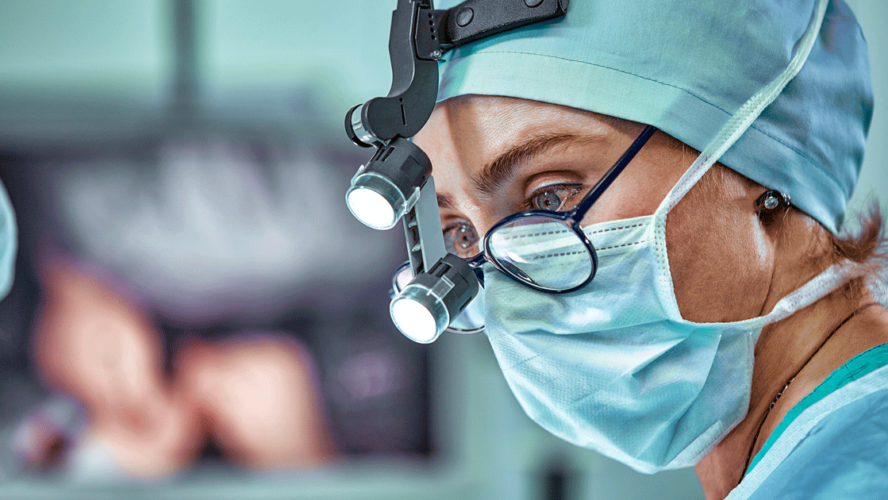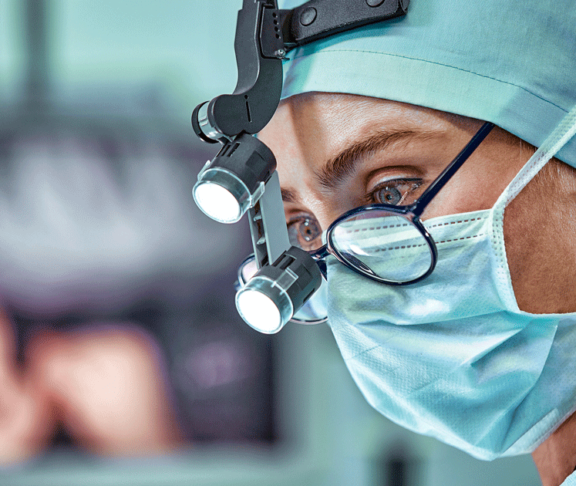
Mr Tim Waters
Consultant Orthopaedic Surgeon

Mr Simon Jennings FRCS(Orth)
Consultant Orthopaedic Surgeon, Clinical Director of Orthopaedics,
LNWUH NHS Trust
Robotic surgery is enabling surgeons to carry out knee replacement operations with more accuracy and control than traditional surgery. 1,2,3,4,5
The robotics technology allows surgeons to map out a knee in real-time during the procedure for Total Knee Replacement (TKR) and and Unicompartmental knee arthroplasty (UKA), to view virtually before proceeding to the patient’s surgery.
Higher accuracy in surgery
The system makes it possible for a surgeon to quickly plan the procedure as many times as necessary. It can map out information such as how to reshape the ends of the bones and the placement of the implant.
Two leading London-based consultant orthopaedic surgeons, Simon Jennings and Tim Waters have been using the latest robotic technology in their surgeries since 2018. They express their opinions on how it is transforming their work for the better.
The surgeons currently use the CORITM System developed and manufactured by global medical technology company Smith+Nephew.
Real-time mapping
Mr Jennings says: “It gives me amazing accuracy and control. You don’t need any previous scans as you can use the computer to do it in real-time; and within a couple of minutes, you can work out the whole mechanics of the knee, the alignment, the surface of the joint and the damage that is there.”
“You can assess the soft tissue tensions so that the ligaments are all balanced before you start your operation. I use it in every knee operation as I find that it’s so much better for me than the old way of doing it.”
It gives surgeons the advantage of accuracy and the ability to tailor the procedure to a specific patient’s requirements. It means that surgeons can tackle deformity or alignment issues.
Data generated from the procedures is enabling surgeons to constantly learn from the process. This way, they can calculate the effectiveness and outcomes to tailor the next procedure to be better.
It gives me amazing accuracy and control.
Mr Simon Jennings FRCS(Orth)
Overtaking traditional methods
Mr Waters says: “This technology is particularly useful for those patients whose operation may be complicated by deformity or previous surgeries where there may be metal in their legs that prevents traditional methods of measuring the knee.”
“As the outcome data comes through we are getting a much better idea of where to place the implant relative to the patient’s anatomy. This information will help improve the results of surgery both robotically and non-robotically assisted.”
The technology is constantly evolving and improving to meet the industry’s requirements. They can use this data as feedback to the manufacturers through regular collaborations.
“I think it is improving month on month,” says Mr Jennings. “The burring tool we are now using, compared to the one we used to have, is much faster; and the ergonomics of the software changes to suit us.”
High potential for patient benefits
This advanced technology allows the surgeons to place unicompartmental knee arthroplasty (UKA)6 implants more accurately4,5 and achieve superior ranges of movements earlier in the process. However, they feel that while there is plenty of evidence from their own experiences, it will take a few years for the data to show how it is improving patient experience and recovery.
“At the moment, it is difficult to assess the effects it is having on patient outcomes as we don’t know yet if it’s down to the specific implant we are using or the robotic technique. But I think in another five years’ time, there will be good data that will show us,” says Mr Waters.
“I do not have concerns with the surgery itself, and the safety and effectiveness of robotic technology has been proven. Surgeons can do a really good job without a robot, but for me the target is always to do better and this tool allows that. I do think it will become the gold standard,” says Mr Jennings.
The clinician testimonials in this article represent the individuals’ own opinions, findings, and/or experiences. Individual results will vary.
All Trademarks acknowledged ©August 2022 Smith+Nephew 37352-uki
[1] Batailler C, White N, Ranaldi FP, et al. Knee Surg Sports Traumatol Arthrosc. 2019;27:1232-1240
[2] Herry Y BC, Lording T, Servien E, Neyret P, Lustig S. Int Orthop. 2017;41:2265-2271.
[3] Bollars P, Boeckxstaens A, Mievis J, Kalaai S, Schotanus MGM, Janssen D. Eur. J. Orthop. Surg. 2020;30:723-9
[4] Gregori A, Picard F, Lonner JH, Smith JR, Jaramaz B. Accuracy of Imageless Robotically Assisted Unicondylar Knee Arthroplasty
[5] Kaper BP, Villa A. Accuracy and Precision of a Handheld Robotic-guided Distal Femoral Osteotomy in Robotic-assisted Total Knee Arthroplasty.
[6] Shearman A, Sephton BM, Nathwani D. Robotic-assisted unicondylar knee arthroplasty is associated with earlier discharge from physiotherapy and reduced length of stay compared to conventional navigated techniques.



